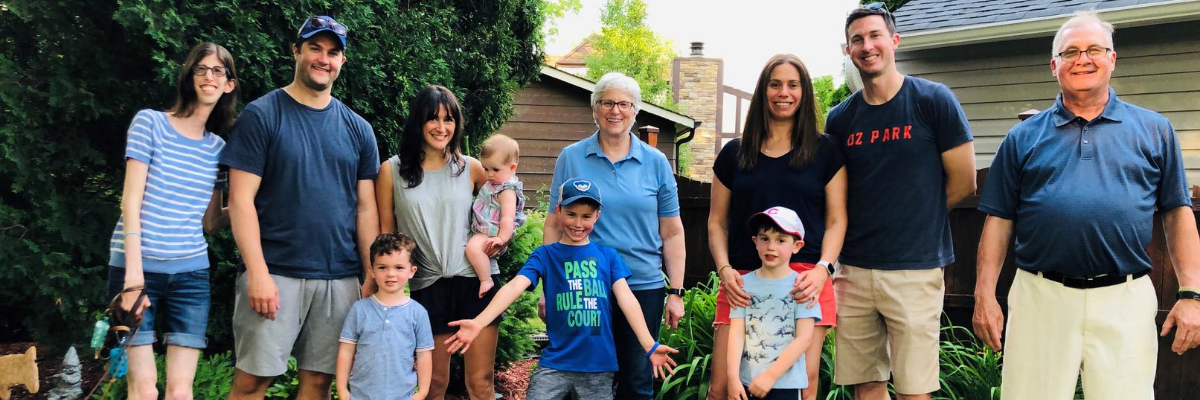
I was diagnosed with Marfan syndrome at the age of ten during a visit to the Mayo Clinic on referral from my orthodontist. I’m now in my thirties and working as an attorney in Chicago. Over the last two and a half decades, I’ve learned a lot about navigating life with Marfan Syndrome. These are the top three things I want to share with someone newly diagnosed:
1. Be your biggest advocate
When I was first diagnosed with Marfan syndrome, I was suddenly thrown into a medical maze full of appointments, doctors, medication, and testing. Because Marfan Syndrome is a connective tissue disorder, there are many body systems involved that need to be monitored and treated. It was overwhelming at times. Over the years, I have learned the importance of having doctors and treatment providers who are on the same page as me. People who listen to my concerns, offer full explanations of my treatment, and make sure I understand the what, why, and how of every decision. Not every doctor is going to be a good fit. I now make sure that I not only have confidence in my doctors, but also that my doctors have confidence in me, trust that I know my own body best, and take my questions, concerns, and input seriously.
2. No need to explain
I look different. I’m very thin, I’m a little taller than average, and I wear extremely thick glasses. Having Marfan Syndrome has occasionally brought unwanted attention and rude comments. I often hear the advice that these negative situations can be turned into teaching moments to raise awareness about my condition. But this advice has never resonated with me. I’m a private person and I do not feel comfortable sharing my personal medical history with strangers just to satisfy their curiosity. Usually in these situations, I will make eye contact, smile, and then go about my business. I don’t owe anyone an explanation about my appearance or abilities. That said, raising awareness is an important function of the Marfan community. The more people become familiar with Marfan Syndrome and related disorders, the more people will be diagnosed and treated. I know that sharing information about my condition really can save lives. I find that doing so in a proactive way, on my own terms and in my own time – instead of when I am put on the spot – allows for a more useful, productive, and informative conversation and creates a much bigger impact.
3. Anything is still possible
Having Marfan Syndrome might change the path you take, but it does not change how far you’ll go. Life with Marfan Syndrome includes a few extra hurdles, but I have discovered ways to use my unique strengths to my advantage. Everyone has some special ability that sets them apart. Kindness, creativity, intelligence, determination, work ethic, or sense of humor are just a few of the personal assets that are just as important, if not more important, than physical abilities. Living a happy, fulfilling, and successful life is not only for physically strong and healthy people.
Marfan Syndrome has never been a barrier to achieving my goals. When I was first diagnosed, it meant that I could not play team contact sports or engage in strenuous physical activity. This was hard for someone like me, who comes from a sports-obsessed, athletic family. But in time I found activities that provided me an opportunity to be a part of the action in a safe way. I started playing the flute, which led to marching band. As part of the marching band, I went to practice every day, put on a uniform every week, learned drills, had a group of people depending on me, and played on the field to a cheering crowd. I had the same fundamental experiences in marching band that I would get playing team sports. I was also fortunate that my high school started a girls golf team, so I joined that, too. Golf is not a traditional team sport, but it still meant I earned a varsity letter. It’s not the path I expected, but it’s given me my own unique story and great experiences.
Diagnosis is just the beginning of the Marfan journey. Even after all these years, I am still learning what works for me. Some things get harder, others get easier, and I never know what the next appointment might bring. With the passage of time comes the wisdom, knowledge, and opportunity to adapt to ever-changing situations. The issues change day-by-day, year-by-year. What remains constant is my resolve to be and do my best.

Megan Price was diagnosed with Marfan syndrome at the age ten. She graduated from the University of Notre Dame with a degree in political science and received her law degree from The John Marshall Law School. Megan currently lives in Chicago where she works as an attorney for a federal agency.
